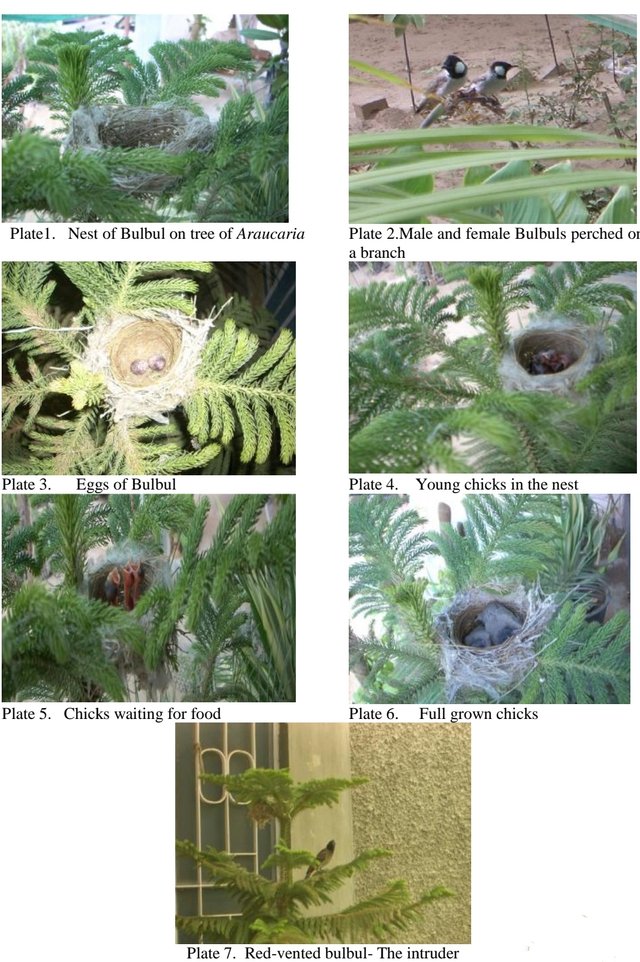The White-eared Bulbul Pycnonotus
leucotis is found mostly in the desert-dry
lowlands from Afghanistan, Pakistan, Iraq,
Iran, Bahrain, and in the northern parts of
India. This bulbul has a medium gray body,
jet black head; subtle rounded black crest
and a distinct white patch over the ear
coverts, hence the name. Feet and legs are
mottled dark gray/brown.
These birds are sexually monomorphic.
An adult is 18cm (6-7 inches) long from tail
tip to beak tip. The tail is jet black, with
1/8th to 1/4th inch white tips on the end of
the feathers visible from above and below.
Oddly, this bulbul, as with the white
spectacled, sometimes called ‘yellow-vented
bulbul’ P. xanthopygos has bright distinct
yellow feathers in the vent area, visible only
from below and behind.
The present observations were made in
the courtyard situated in the city of Bikaner
(28°N latitude and 73°18'E longitudes), Rajasthan, on a small Araucaria tree planted
in a pot where the bulbul constructed its nest
(Plate 1.). Both the male and female (Plate
2.) took part in the event. The clutch size
was of two to three eggs (Plate 3.), which
hatched in 14-15 days (Plate 4.). Female
brought the feed for the young chicks which
seemed to be always hungry (Plate 5.).

The food generally comprised of small insects
and their larvae which were seen to be
picked up from the adjoining plantations.
The chicks grew to their full in about 15
days (Plate 6.) after hatching. It was
observed that the male took full interest in
guarding the nest and the young ones. Red
vented bulbul (Plate 7.) was among the
intruders which tried to attack the nest
besides the crows.
A significant finding was that the nest
was reused by the adults for laying eggs.
During the period of about two and a half
months, the nest was used thrice by the
same pair; first clutch size was of three
while the following one had two eggs at a
time. The first batch of young ones although
hatched successfully (Plate 5.) were preyed
upon by the crow but the chicks which
hatched out from the subsequent two grew
up to take flight (Plate 6.).